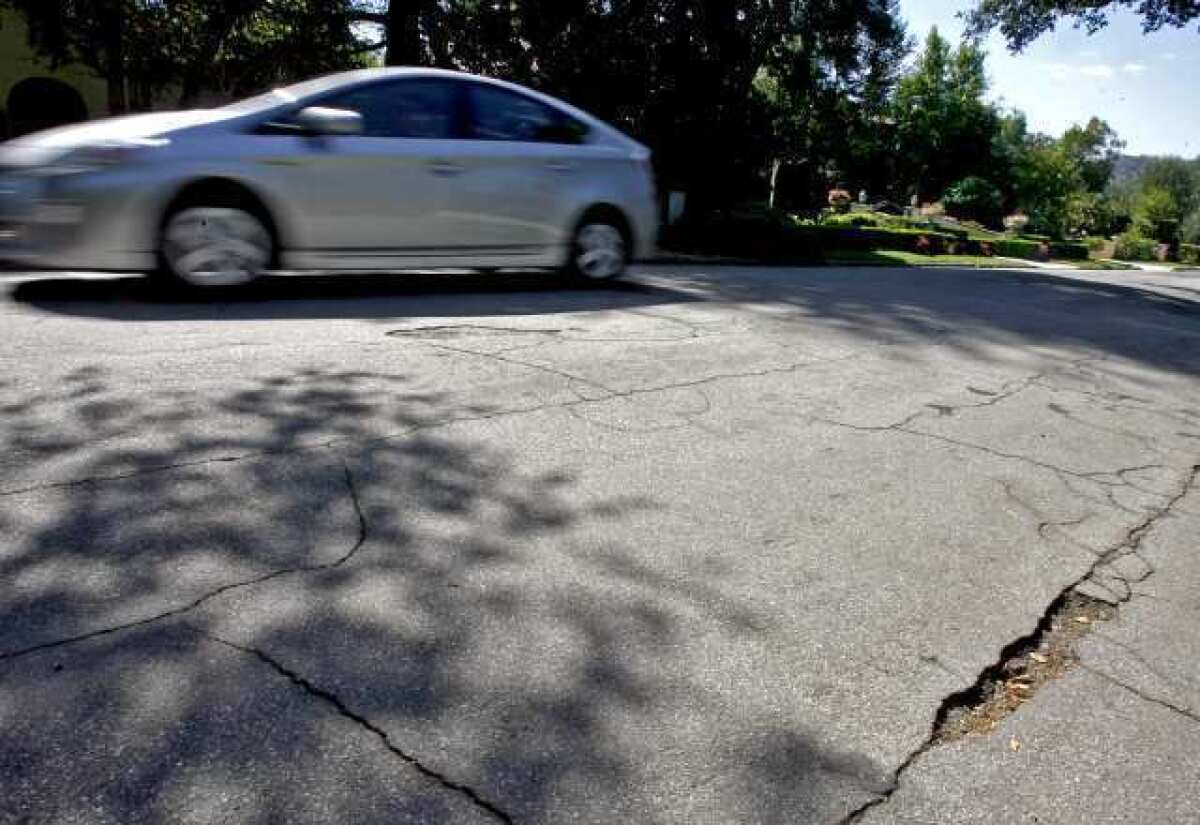A costly trail to smooth streets

La Cañada Flintridge officials are playing catch-up in an attempt to resurface all 110 miles of the city’s streets. The problem is, they don’t have all the money the work requires.
City staffers hope to set La Cañada on a course to repave all of its roads over the next 15 years, the projected time before they begin to deteriorate. But at the rate the city is funding the effort, the work would take 35 years.
After spending $1.25 million on street resurfacing in the 2011-12 budget, the City Council approved a budget that includes only $690,500 for the program this year — enough to resurface about two miles of road.
In order to keep the 15-year pace, the city would have to repave 7.2 miles of a street a year.
Councilman David Spence said that the city would prefer to accelerate the pace of the resurfacing program, but didn’t have a choice this year.
“We’re trying to find more money – we probably could have spent $1.5 million, but we had to cut it back because we didn’t have the extra cash on hand to do that much work,” he said.
“We’re always aware we could spend more and do more streets, but I think we are covering the streets that are in the worst shape,” he added.
The street resurfacing program pulls from the city’s General Fund, and so relies on the council finding surplus funds after establishing its preliminary budget.
In addition, in 2009 and 2010 the city received a total of $830,000 in federal stimulus and transportation funds to help with the effort, but has received no state or federal funding in the last two years.
In 2011, a county survey judged La Cañada roads to be in good condition, earning 77 points of a possible 100. The Los Angeles County Department of Public Works is currently performing a new pavement evaluation, according to City Engineer Ying Kwan.
Kwan said the city is currently putting together a list of streets that will benefit from the next planned resurfacing, to take place during the winter of 2013.
Spence said problem streets, including Haskell Street, would be included in the next resurfacing.
Resurfacing a street involves grinding the existing asphalt roadway down and replacing it with a new asphalt overlay of the same thickness.
Resurfacing streets allows the city to prevent roadway failures, which require much more costly reconstruction work involving scraping down to the native surface and building back the road, curbs, gutters and sidewalks.
One road project is getting special attention this year. The city set aside $100,000 for the design phase of reconstruction for Woodleigh Lane from Foothill Boulevard to Berkshire Avenue, a distance of a half-mile. Woodleigh has been resurfaced so many times that is now beyond repair and must be totally reconstructed, according to a city report. The construction cost of the project won’t be known until the design is completed, Kwan said.